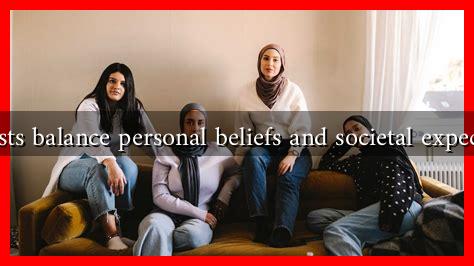-
Table of Contents
How Do Muslim Feminists Balance Personal Beliefs and Societal Expectations About the Hijab?
The hijab, a traditional headscarf worn by many Muslim women, has become a symbol of both empowerment and oppression, depending on the context. For Muslim feminists, the hijab represents a complex intersection of personal beliefs, cultural identity, and societal expectations. This article explores how these women navigate their choices regarding the hijab while balancing their personal convictions with external pressures.
The Hijab: A Symbol of Identity
For many Muslim women, the hijab is more than just a piece of clothing; it is a significant aspect of their identity. It can symbolize faith, modesty, and cultural heritage. However, the meaning of the hijab varies widely among individuals and communities. Some key points to consider include:
- Religious Significance: For devout Muslims, wearing the hijab is an act of obedience to God and a manifestation of their faith.
- Cultural Identity: In many cultures, the hijab is a marker of ethnic identity, connecting women to their heritage.
- Personal Empowerment: Some women view the hijab as a means of reclaiming their bodies and asserting their autonomy in a society that often objectifies women.
Societal Expectations and Pressures
Despite the personal significance of the hijab, societal expectations can create tension for Muslim feminists. In many Western societies, the hijab is often viewed through a lens of misunderstanding and prejudice. This can lead to various challenges:
- Discrimination: Muslim women who wear the hijab may face discrimination in workplaces, schools, and public spaces.
- Media Representation: The portrayal of hijab-wearing women in media often leans towards stereotypes, which can perpetuate negative perceptions.
- Peer Pressure: Within their communities, women may feel pressured to conform to certain standards regarding the hijab, leading to internal conflict.
Navigating Personal Beliefs and Societal Expectations
Muslim feminists employ various strategies to balance their personal beliefs with societal expectations regarding the hijab. These strategies often involve a combination of advocacy, education, and personal choice:
- Advocacy and Activism: Many Muslim feminists engage in activism to challenge stereotypes and promote a more nuanced understanding of the hijab. Organizations like Muslimah Media Watch work to amplify the voices of Muslim women and provide platforms for discussion.
- Education: Educating others about the hijab’s significance can help dispel myths and reduce stigma. Workshops, community discussions, and social media campaigns are effective tools for this purpose.
- Personal Choice: Ultimately, many Muslim feminists emphasize that the decision to wear or not wear the hijab should be a personal one, free from coercion. This perspective aligns with the broader feminist principle of bodily autonomy.
Case Studies: Voices of Muslim Feminists
Several prominent Muslim feminists have shared their experiences regarding the hijab, providing valuable insights into this complex issue:
- Yasmin Mogahed: A well-known speaker and author, Mogahed emphasizes the importance of intention behind wearing the hijab, advocating for personal choice rather than societal pressure.
- Linda Sarsour: A political activist, Sarsour has spoken out against discrimination faced by hijab-wearing women, highlighting the need for solidarity among women of all backgrounds.
- Asma Uddin: A legal scholar, Uddin argues for the protection of religious freedoms, including the right to wear the hijab, as a fundamental aspect of women’s rights.
Conclusion: Embracing Complexity
The hijab serves as a powerful symbol for many Muslim feminists, representing both personal beliefs and societal challenges. By advocating for their rights, educating others, and emphasizing personal choice, these women navigate the complexities of their identities in a world that often imposes rigid expectations. Ultimately, the journey of Muslim feminists regarding the hijab is one of empowerment, resilience, and a commitment to challenging societal norms while honoring their faith and identity.
As society continues to evolve, the dialogue surrounding the hijab will likely grow more nuanced, reflecting the diverse experiences of Muslim women around the world. Understanding these perspectives is crucial for fostering a more inclusive and respectful society.

